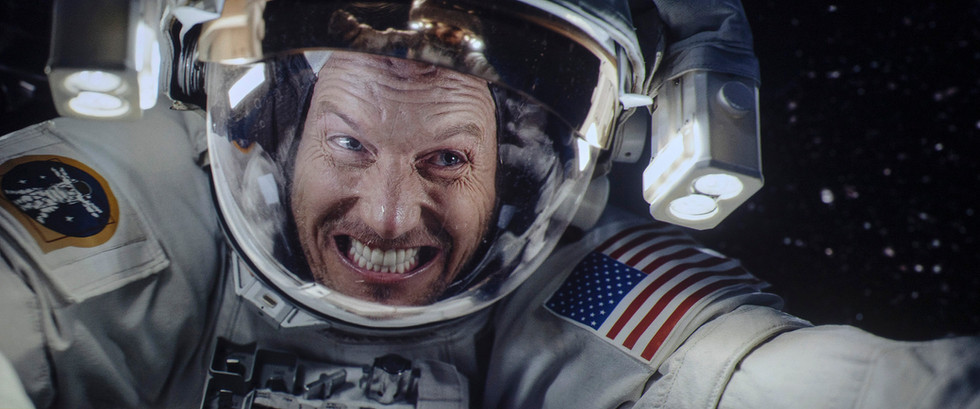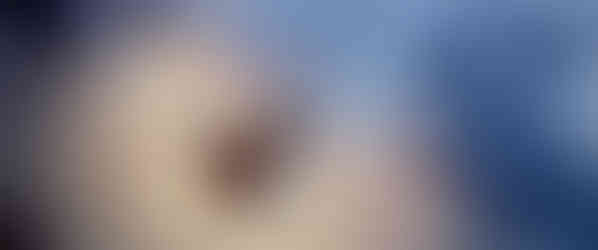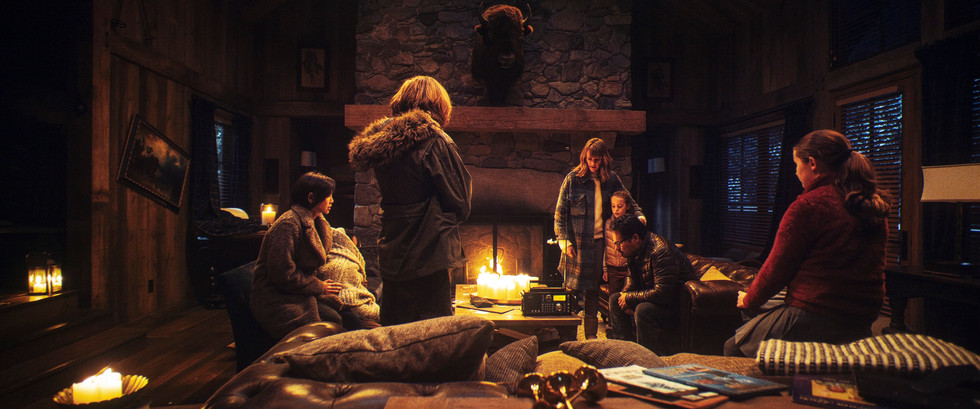Rip-roaring sci-fi adventure – “Moonfall” – from Emmerich and Kloser
- Bill Kelley III
- Apr 27, 2022
- 6 min read
Updated: Apr 28, 2022
4K ULTRA HD REVIEW / HDR FRAME SHOTS
(1) Conspiracy theorist K.C. Houseman (John Bradley) and former astronauts, disgraced Brian Harper (Patrick Wilson) and Jo Fowler (Halle Berry) lead a mission to save Earth from the Moon, which is falling from its orbit toward our planet. (2) The mothballed Endeavour Space Shuttle was used for the mission as Moon debris surrounds the spacecraft.
(Click an image to scroll the larger versions)
“MOONFALL”
4K Ultra HD, Blu-ray, Digital copy; 2022; PG-13 for violence, disaster action, strong language, and some drug use; Streaming via Amazon Prime Video (4K), Apple TV (4K), Vudu (4K), YouTube (4K)
Best extra: Commentary with director Roland Emmerich and producer partner Harold Kloser
WRITER/PRODUCER/DIRECTOR ROLAND EMMERICH is a hit or miss type of filmmaker. Best known for his electrifying sci-fi and disaster adventures, “Stargate” (1994), “Independence Day” (1996), which made Will Smith a megastar, “The Day After Tomorrow” (2004), and “White House Down” (2013), others such as “Godzilla” (1998), “10,000 B.C.” (2008), “2012” (2009), and “Independence Day: Resurgence” (2016), were on-screen disasters, panned by critics. Even so, the German-born director has a huge fanbase, and most of his films are box office successes.
Two personal favorites are Emmerich’s “Midway” (2019), the heroic and gritty World War II docudrama, with 500-plus computer-generated effects shots. Also the flag-waving “The Patriot” (2000) with fictional and factual characters in a historical backdrop of the Revolutionary War. It ended up with three Oscar nominations for Best Sound, Music Score by John Williams, and Best Cinematography by Caleb Deschanel.
Emmerich’s latest sci-fi adventure “Moonfall” was recently screened at the Director’s Guild of America (DGA) Theater in Hollywood. Afterward, he sat down for a 30-minute Q&A with fellow director Anna Foerster (“Outlander” TV series), who got her start working on his films. “I swore I wouldn’t make another disaster movie,” he says as the crowd laughs. The interview is available on the DGA “The Director’s Cut” podcast. He admits “Moonfall” fell way short of its hopeful box office, only making $43 million worldwide, and critically receiving lukewarm reviews. But audiences were more positive, giving a rating of just below 60 percent on Rotten Tomatoes.
(1-4) During a 2011 satellite repair mission, something terrible goes wrong. A “space anomaly” swarms the crew and the Endeavour Space Shuttle, then bores into a moon crater. (5&6) Astronaut Alan Marcus (Frank Fiola) spins out of control, as Astronaut Brian Harper reaches out to try to save him. (7) Astronaut Jo Fowler was injured during the attack.
Frustrated by COVID-19 protocols, he and his producers couldn’t test screen “Moonfall,” a past barometer to help find a film’s sweet spots and shortcomings, and adjust before its premiere. The production was filmed completely during the pandemic on soundstages with elaborate production sets and blue screens in Montréal, Quebec. The Canadian city has been his Hollywood for 20 years because he loves its restaurant scene. Normally, he would take his actors out to dinner after a long day of shooting. But, with COVID lockdowns the dinners were off-limits. Plus, mask-wearing and social distancing on set kept him from developing a closer relationship with his cast.
The genesis of “Moonfall” began a decade ago when he read the novel “Who Built the Moon?” Three theories dominate the book. First, aliens built the moon, or it was God or our distant relatives. “I just couldn’t get it out of my head,” he says, noting how the story kept resurfacing. His vision mostly takes place in space, different from previous disaster films. “Maybe it’s worth telling,” he said.
Emmerich’s movies have a common thread; they all start in his imagination. “I try to get it [the story] as close as possible to that [mental] movie.” Most of the time he ends up depressed. “Naturally, the movie is never as good as I imagined.” “Moonfall” clearly falls into that camp, lacking the emotional connection of his more successful neo-disaster flicks and a script that’s full of unintentional laughs. On the positive side, it's loaded with 1,700 top-notch effects shots from VFX supervisor Peter Travers (“Midway,” “Guardians of the Galaxy”).
The film’s central characters are two former astronauts, Jo Fowler (Halle Berry) and disgraced Brian Harper (Patrick Wilson), joined by conspiracy theorist K.C. Houseman (John Bradley), a character similar to his role in “Game of Thrones,” Samwell Tarly. A mysterious force is causing the Moon to fall from its orbit sending it toward Earth. Emmerich intended the movie as a “warning of artificial intelligence … that it could destroy us.”
(1&2) K.C. Houseman discovers the Moon is falling out of orbit. The next day tries to meet Brian Harper, at the Mount Wilson Observatory. When Harper doesn’t show for a student Q&A, Houseman pretends to be the former astronaut. (3) Brian calls his ex-wife Brenda Lopez (Carolina Bartczak) after their son was arrested. (4) NASA Director Albert Hutchings (Stephen Bogaert) and Jo Fowler address the media after Houseman broke the news about the Moon.
VIDEO
Captured on 8K Redcode RAW digital cameras (2.39:1 aspect ratio), “Moonfall” was sadly mastered in 2K, even though IMDb says it’s in 4K. The rendering time and cost to handle the VFX shots forced the lower resolution. A dash of post-production film grain was added, and is visible on the 4K and Blu-ray discs. The onscreen differences between the two formats is minimal, with a slight edge to the 4K. On my supersize 2.05:1 aspect ratio screen, standing only two feet away, I saw few disparities, with the smallest lettering and numbers on the Shuttle’s computer screens in the 4K revealed more clearly. At normal seating distance, it was all the same.
HDR grading (HDR10 & Dolby Vision) is marginally better on 4K than 1080p. Black levels among the shadows are more striking, without losing detail, although strangely, the 4K is brighter than the 1080p. The highlights are still controlled and not washed out, but the mid-tones are livelier – giving Wilson’s blue eyes more pop. The 1080p seems somewhat muddy compared to the 4K. The color palette is slightly desaturated and natural with facial toning among the diverse cast.
AUDIO
Here’s where the 4K and Blu-ray really ROCK! The eight-channel Dolby Atmos soundtrack has some of the lowest bass responses ever heard for home listening. Thank goodness I added a second layer of soundproofing drywall in my theater room; it nicely suppressed the bass vibrations that were previously transferred to my ceiling mount projector. My subwoofers got a full workout – especially during the final act. The height speakers provided plenty of effects and music cues as sound moves through the theater environment.
For those not sharing walls, I give you permission to let the volume rip. But, for everyone else, it's best if you invite your neighbors over to keep everyone happy and experience the sci-fi popcorn adventure together.
EXTRAS
The 4K, Blu-ray, and digital includes an informative commentary with Emmerich and his longtime co-producer/writer/composer Harald Kloser. The duo reveals from the first that “Moonfall” was an independent film using mostly foreign investors – which meant the budget was locked. Within the first three minutes, we meet NASA astronauts Fowler and Harper and their partner Alan Marcus (Frank Fiola) on a 2011 satellite repair mission, when something terrible goes wrong. A “space anomaly” swarms the crew and the Endeavour Space Shuttle, then bores into a moon crater. Emmerich says the NASA helmets were captured without the glass shield, with reflections added digitally. Plus, the difficulty of shooting the actors in a weightless environment – using cables, and chairs attached to cranes for the effects were digitally removed later.
(1) The Mount Wilson Observatory, as violence and looting overtakes L.A. and other cities as the moon gets closer. (2) A tsunami hits the California coast and Brian saves K.C. from the rushing waters. (3) The Endeavour Space Shuttle is pulled from the California Space Museum to be used in the special mission. (4&5) Jo tells her son goodbye, just before she, Brian, and K.C. are buckled into the Endeavour and launched from the Vandenberg Space Force Base. (6) Brian’s son Sonny (Charlie Plummer) watches the shuttle as it clears the tower.
Two documentaries are included. A 58-minute “Against Impossible Odds: Making of” provides several congratulatory comments from the cast and crew as Emmerich highlights the book, “Who Built the Moon?” He read the novel while filming the sequel to “ID4,” pulling Kloser to the side to tell him that the moon might be a “hollow, constructed object.”
To line up financing, Emmerich and Kloser created a teaser trailer showcasing President Kennedy's famous moon speech, with a massive, animated moon entering the Earth’s atmosphere, and captions: “In 2021, the Moon will come to us.” Kloser says, “Boom, that was it. We sold the movie all over the world.”
Actor John Bradley became fascinated with the concept: “The thing that’s going to destroy us, is not something coming from the other side of the universe, but the thing that’s always been there.”
The second featurette is the 26-minute “Exploring The Moon: Past, Present and Future,” with interviews from scientists and NASA officials who recap the importance of the moon and its effects on Earth’s tides and calendars. Plus, how it stabilizes the Earth’s tilt during its rotation, keeping the planet’s overall climate stable.
Lastly, a short seven-minute comical featurette “Dr. KC Houseman Speaks the Truth!” spills out info about “What is a megastructure,” “Oddities of the Moon” and “Ask Me Anything.”
— Bill Kelley III, High-Def Watch producer















































Commenti